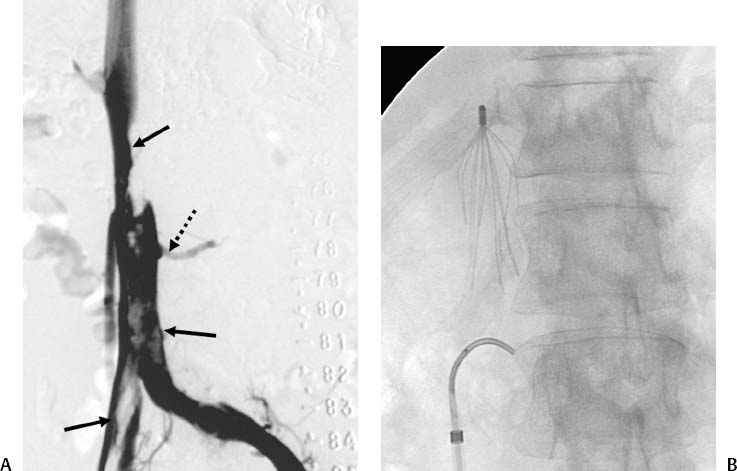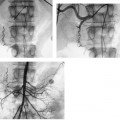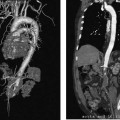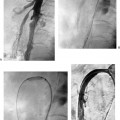CASE 54 A 48-year-old male with a history of colon carcinoma, status partial colectomy, presented with deep venous thrombosis (DVT) on postoperative day 3. An inferior vena cava (IVC) filter was requested as the patient was not a candidate for anticoagulation. Figure 54-1 A 48-year-old male with a history of colon cancer and partial colectomy who developed DVT after surgery presented for IVC filter placement as he was not a candidate for anticoagulation. (A) IVC venogram shows clots in the right iliac vein and IVC (solid arrows). Reflux of contrast into the right renal artery was seen (dashed arrow). (B) A Recovery filter (Bard Peripheral Vascular, Tempe, Arizona) was placed in the suprarenal IVC. The right common femoral vein was punctured using the Seldinger technique, and the needle was exchanged for a pigtail catheter that was positioned in the IVC. Cavography revealed extensive clot in the right iliac vein and infrarenal IVC (Fig. 54-1A). We discuss the therapeutic options. Infrarenal IVC thrombosis.
Clinical Presentation

Radiologic Studies
Venacavogram
Diagnosis
| Infrarenal IVC thrombosis Extensive clot in infrarenal IVC Renal vein thrombosis Pregnancy or intent of pregnancy Ovarian vein thrombosis Infrarenal IVC filter clot with superior extension Failure of infrarenal IVC filter |
IVC, inferior vena cava.
Treatment
IVC Filter Insertion
Placement of a filter in a conventional location in the infrarenal IVC was not considered appropriate in this patient as there was not enough room in the infrarenal IVC to insert a filter. Ideally, the filter should be positioned superior to all clots to provide adequate protection. A Recovery Nitinol filter (Bard Peripheral Vascular, Tempe, Arizona) was placed above the level of the renal veins (Fig. 54-1B).
Discussion
Background
Suprarenal IVC filter placement is required in fewer than 3% of patients. Indications for this alternative position are listed in Table 54-1. The most common indication is infrarenal IVC thrombus. In pregnant women or young women with the intent of becoming pregnant, the suprarenal filter position is advocated based on the theory that compression of the filter or IVC by the gravid uterus can cause uterine injury or promote IVC thrombosis (Fig. 54-2).
Noninvasive Imaging Work-up
Stay updated, free articles. Join our Telegram channel

Full access? Get Clinical Tree








